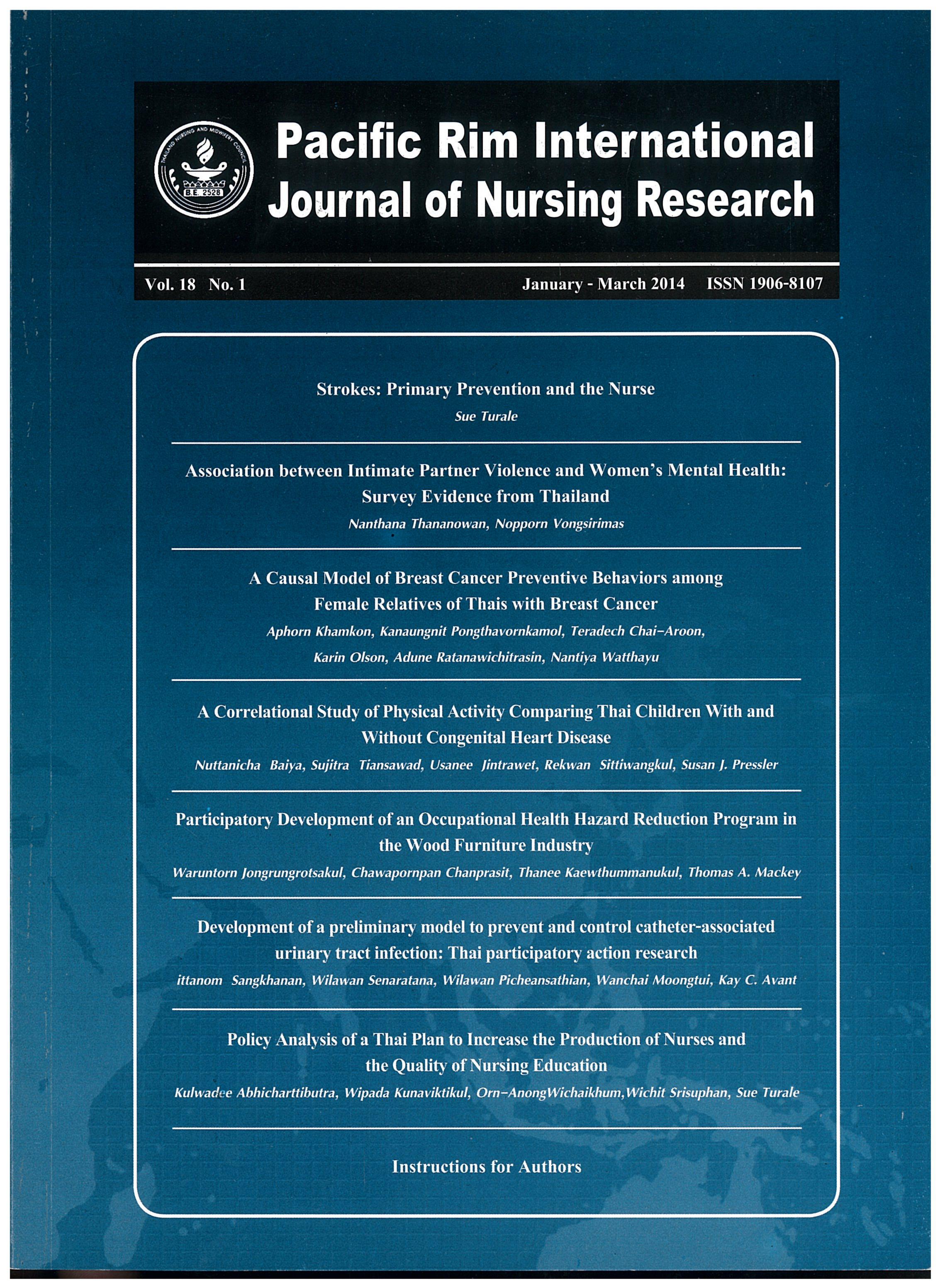A Correlational Study of Physical Activity Comparing Thai Children With and Without Congenital Heart Disease
Keywords:
Physical activity, Congenital Heart Disease, Correlational study, Children, ParentsAbstract
The aims of this descriptive correlational study were to compare physical activity of Thai children with congenital heart disease after corrective surgery (Group A) to the children without congenital heart disease (Group B) and to explore factors correlated with the level of physical activity in each group. A total of 320 subjects were purposively recruited: 80 school-aged children plus their parents in Group A from the cardiology clinic of a university hospital, and 80 matched-group children and their parents in Group B from two public primary schools. Data were collected using four instruments: 1) the Modified Thai Adolescent’s Physical Activity Questionnaire, 2) the Child Health Status Questionnaire-Forms I and II, 3) the Parental Knowledge about School-aged Children Physical Activity Scale, and 4) the Perceived Self-efficacy to Physical Activity Questionnaire. Data were analyzed using independent t-test and Pearson’s correlation.
The results revealed that physical activity of Group A in terms of total energy expenditure and mean duration of physical activity with moderate-to-vigorous intensity was less than Group B. In Group A, child perceived health status was significantly positively correlated with moderate-to-vigorous physical activity, but in Group B, child physical activity self-efficacy was a correlated factor. In both groups, parental knowledge of physical activity of school-aged children and parents’ perception of their children’s health status were not significantly correlated with physical activity. The findings indicate that pediatric nurses should encourage physical activity and provide information about it for children and their parents. However, a replication of this study with larger sample size and other possible factors is recommended.
Downloads
Published
How to Cite
Issue
Section
License
Copyright: The Pacific Rim International Journal of Nursing Research, Thailand Nursing & Midwifery Council has exclusive rights to publish, reproduce and distribute the manuscript and all contents therein.








.png)



